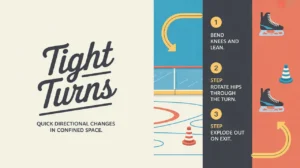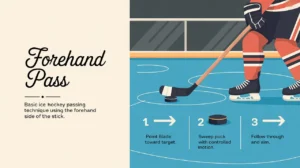Jim’s Intro to Pinning on the Boards
Hi folks, Jim here, the only commentator who once thought “pinning on the boards” was an important part of any vision board exercise.
What is pinning on the boards?
Pinning on the boards is a defensive and puck-battle technique where a player uses their body to trap an opponent and the puck against the boards, stalling their movement and allowing teammates to support or win possession. It’s about leverage, positioning, and patience.
How does it work?
Pinning relies on body control, angles, and smart use of the boards:
- Close the Gap: Approach the puck carrier along the boards with a tight angle.
- Get Low and Strong: Bend knees, keep your feet wide, and lower your center of gravity.
- Shoulder-to-Shoulder Contact: Lean in with controlled pressure rather than shoving.
- Seal the Wall: Use your hips and legs to block escape routes while keeping your stick free.
- Trap the Puck: Pin both the opponent and the puck to limit their ability to move.
- Stay Balanced: Avoid overcommitting so you don’t get spun off the play.
How do you make good decisions with it?
- Pick the Right Spot: Pinning works best along the boards in tight puck battles, not open ice.
- Read Support: Know where your teammates are so you can hold the puck until help arrives.
- Avoid Penalties: Keep arms down, avoid head contact, and use legal body pressure.
- Know When to Release: Once the puck is loose or your team gains control, disengage quickly.
- Don’t Overdo It: Holding too long without support can trap your own team.
How do you master it?
Mastering pinning takes repetition in battle drills, with players practicing body positioning, leverage, and timing. Strong legs, core stability, and awareness are key to holding ground without fouling.
What does it look like when done right?
A great pin looks controlled and composed. The defender locks their opponent against the wall, the puck is neutralized, and support arrives to clean up the battle, often leading to a clean breakout or turnover.
Commentator’s Corner
Jim’s Take
A good pin is like holding a door shut during a storm. You don’t need to slam it, just keep it sealed until backup arrives.
Parent Tip
Encourage players to focus on body control, not brute force. Proper pinning keeps everyone safer and more effective in battles.
Player Tip
Get low, stay balanced, and use your hips and legs to control the space. The best pins feel effortless.
A Final Thought
Pinning on the boards is hockey’s quiet power move. Master it, and you’ll turn chaos into control and give your team the edge in gritty battles.









